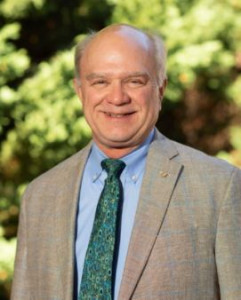 By: Joe Fox
By: Joe FoxWater is the most important substance on the planet – the presence of clean and abundant water is crucial to the survival of humans and thriving communities. Healthy rivers, streams, springs and lakes are also a big part of what makes the southeastern United States so unique and special. From sustaining life on earth to sustaining our economy and future, good water quality is essential.
But what does this have to do with forestry? Well… Everything.
In the Southeast, more than 44% of the total water supply, or about 98 trillion gallons, comes through state and private forests before it makes its way into waterbodies. This means that what happens in the forest, doesn’t just stay in the forest. Providing more than half of the available water supply for 14 million people, healthy forests that effectively filter water, recharge aquifers and prevent erosion are central to supporting our fundamental need for clean water.

The forest-water connection has been formally acknowledged by the forest sector for decades. In 1972, the Clean Water Act (CWA) expanded U.S. water quality protections, creating a regulatory structure to govern pollutant discharges into waterbodies, and directed states to assess nonpoint source (NPS) pollution impacts to water quality. This spurred a states-led effort to develop forestry best management practices for water quality (BMPs) to tackle NPS pollution from major land uses, including silviculture (forest management/forestry operations). Since then, the program has grown, with all states now having forestry BMP programs in place to minimize water quality impacts and protect impaired waterbodies.
What Are Forestry BMPs?
Forestry BMPs provide a science-based operational framework to mitigate sources of potential water pollutants, both effectively and achievably, to a level fitting within defined water quality standards. Redundancy is built into the system, so when forestry BMPs are properly implemented, they help control erosion and runoff, prevent pollution from hazardous chemicals and protect aquatic ecosystems. For example, road systems are carefully planned and designed to follow the natural contours of the land and avoid waterbodies where possible. During construction and maintenance, bare soil road surfaces are armored, ditches and water diversions are installed, and forested stream buffers are established to allow sediment to settle out of stormwater prior to reaching a stream.

While each state’s forestry BMPs differ based on local factors, most BMPs offer guidance for the following forestry operational categories:
- forest road construction and maintenance
- log landings (decks)
- skid trails
- streamside management zones (SMZs)
- stream crossings
- wetland protection and management
- timber harvesting
- site preparation
- reforestation
In the Southeast, we typically see a non-regulatory approach to BMP implementation. Loggers, foresters and landowners select from a variety of approved BMP recommendations relevant to the site. Because we rely on cooperative BMP adoption, state forestry agencies in the South work collaboratively with key groups and stakeholders to educate, incentivize and reduce barriers to application. This often includes efforts like logger training and certification programs, preharvest planning advice, property tax incentives, equipment loan programs and helping develop forest management plans.
Are Forestry BMPs Being Used?
To properly examine the effectiveness of the non-regulatory approach, we must have good data on the presence and functionality of forestry BMPs. Southern state forestry agencies conduct BMP implementation surveys to measure BMP implementation, and how and where BMPs are being used. For these surveys, state technical experts visit forestry sites to observe and report their findings.
Regionally, all states within the Southern Group of State Foresters follow a standardized monitoring protocol. This protocol gives the states common methods, allowing us to make comparisons between states. Combining all BMP categories in all states (and using the most recent survey data), the southern region’s average overall BMP implementation is 93.6%, up from 92% in 2012 and 87% in 2008.

Both at the state and regional level, the findings from BMP implementation surveys have been an important tool to assess and fine-tune efforts to maximize water quality protection. For instance, states use the monitoring results to refine or focus training programs for specific geographic regions or forest operations, like road construction or stream crossings.
Do Forestry BMPs Actually Work?
Research shows that watersheds with greater forest coverage produce better water quality than watersheds with lesser forest coverage. This principle remains true even when forests are actively managed – as long as forestry BMPs are implemented properly.

Forestry BMPs have undergone many scientific research studies to determine their effectiveness in minimizing impacts to water chemistry, physical properties, aquatic communities and overall stream health. A recent literature review summarized the conclusions of 81 different studies conducted across the country, primarily within the last thirty years. While these studies are often region or site specific, they clearly demonstrate a common outcome: forestry BMPs successfully minimize water quality impacts from forestry operations when implemented as recommended by state forestry agencies.
A Collaborative Approach Based on Continual Improvement
Through effective collaboration and a dedicated commitment to stewardship, forestry BMPs have become institutionalized throughout the entire sector. In addition to state surveying programs, mills, timber investment management organizations (TIMOs), national forests and forest consultants all monitor BMP implementation on lands under their management. Many forest product manufacturers and corporate landowners require contractors to attend formal BMP training workshops, include BMPs in timber sale contracts and procure wood exclusively from landowners who implement BMPs.

State forestry water resource programs and BMP guidelines are designed to evolve over time based on new research, technology, operations and monitoring data. A 2013 survey of state forestry agencies indicated that, over the last ten years, 36 states had either written new BMP guidelines or revised existing ones. With such high implementation rates in the South, an ever-increasing knowledge base on their effectiveness and a commitment to continual improvement, it is clear this collaborative, non-regulatory approach has produced healthy working forests that support landowners’ economic goals while enhancing environmental health and water quality.
